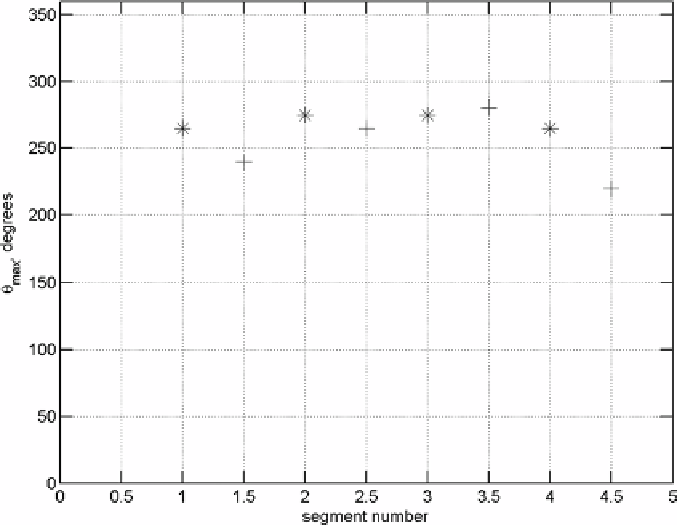Geoscience Reference
In-Depth Information
Figure 7.7 Main direction of subsequent breaking-wave (*) and broken-wave (
+
) segments. Figure
is reproduced from
Young & Babanin
(
2006a
) © American Meteorological Society. Reprinted with
permission
at larger angles, certainly in the half-plane opposite to the wave-propagation half-plane, this
result implies that the dissipation function
S
ds
(
,θ)
in
(2.61)
,
(2.25)
and
(5.49)
has to be
bimodal in the directional space. Unlike the wind-input function
S
in
(θ)
f
which is unimodal
and has a distinct maximum in the main wind direction,
S
ds
(θ)
may have maxima at angles
oblique to the wind-input maximum angle.
The impact of the dominant breaking on directional dissipation at 2
f
p
is similar, though
less pronounced (
Figures 7.10
,
7.11
). There is a noticeable loss of energy in the pri-
mary wind/wave direction, and the oblique peaks are pushed farther away. The former
can be explained by the influence of the induced breaking. That is, the dominant waves,
whose directional distribution is quite narrow, enforce the short-wave breaking in the wind-
predominant direction primarily, and the dip in the centre of
Figure 7.11
becomes less
pronounced compared to
Figure 7.9
. The trend of the oblique peaks requires further con-
firmation, understanding and explanation, as does the very directional bimodality of the
f
p
waves.
Thus, it appears that the directional dissipation rates at oblique angles are higher than
the dissipation in the main wave-propagation direction. With respect to the breaking as
such, this conclusion does not necessarily immediately translate into directional properties

Search WWH ::

Custom Search